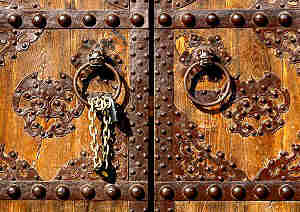Flourishing age of decorative arts
China's traditional architectural ornamentation, a centuries-old art in which carved wood doors and windows played an important role, prevailed especially during the Ming and Qing periods.
By the end of the 16th century, architectural ornament, which became very popular during the Song Dynasty (960-1279) over 1,000 years ago, had become a sumptuous part of a building, with great displays of marquetry (inlaid works) and carving, decorated with beautiful latticework motifs derived from traditional designs that reflected Chinese culture.
The Ming Dynasty was an age of expansion and prosperity when decorative arts flourished, while its wood doors and windows, simple but elegant, were characterized by soft curves, flowing lines and appealing proportions. This distinct artistic style could also be seen in all varieties of Ming furniture. Great emphasis was placed on the use of the wood's natural beauty together with the adoption of latticework and openwork carving.

Influenced by the burgeoning foreign trade and advanced craftsmanship, doors and windows of the Qing period, larger and more imposing in contrast, favored rich and intricate ornamentation, along with coordinated engraved designs. A large number of complicated woodcarving patterns were added.
Although these two types differed greatly in style, each reached a high level of artistic success with exquisite design, unique workmanship, and careful carving, and can claim a place in the history of China's architectural ornamentation.
Regional diversification
Traditional Chinese doors and windows were different in style from place to place. In ancient times, woodcarving was well developed in South China. Windows and doors of the eastern provinces of Zhejiang and Anhui were often elaborately decorated with latticework and bas-reliefs.
Those of China's coastal provinces of Fujian (East China) and Guangdong (South) were usually gorgeously painted. But people living along the lower Yangtze River stressed the natural beauty of wood and preferred their doors and windows unpainted.
Doors and windows in the South, often decorated with characters from theatrical plays, were much finer than those in the North; while in the North, doors and windows mostly featured things in the natural world, such as geometric symbols, plants and animals, and sometimes even human figures.
In the 15th century, carpenters and jointers began to move to the North from Zhejiang Province. As a result, doors and windows featuring patterns of South China style began to be found in the North.










